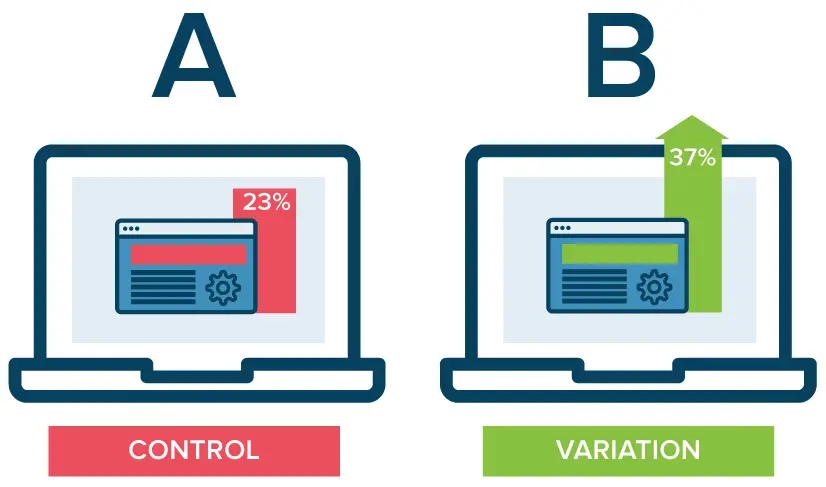
The Art and Science of A/B Testing in Digital Marketing
A/B testing—also called split testing or bucket testing—compares the performance of two content versions to see which appeals more to visitors/viewers. It tests a control (A) version against a variant (B) version to measure which one is most successful based on your key metrics.
Understanding A/B Testing:
A/B testing involves creating two versions of a marketing asset (A and B) that differ by one variable, such as headline, call-to-action, image, or layout. The two versions are then randomly presented to users, and their performance metrics are compared to determine which version drives better results.
What is A/B Testing in Digital Marketing?
- A/B testing in digital marketing is a type of content experiment where marketers create two variations of a landing page or web page to determine which one performs the best against defined marketing objectives.
- The best way to understand A/B testing is to understand it in relation to the other most common types of context experiments: split tests and multivariate tests.
- A split test, or split URL test, is a content experiment where marketers present two completely different landing pages to different groups of customers, and then measure conversions to determine which landing page performed better.
- In an A/B test, digital marketers do not use completely different landing pages. Instead, they use variations of the same page with just one element changed, such as the call-to-action, sales copy, or the color or position of an element on the page.
- While split testing measures the difference in performance between two completely different pages, A/B testing tries to find performance improvements by making minor changes to individual page elements and measuring any resulting changes in clicks or conversions.
- Some digital marketers also use multivariate testing experiments to improve website performance.
Five A/B Testing Use Cases
Email Marketing
In email marketing, digital marketers can employ A/B testing by creating two slightly different variations of the same email, sending them to different groups of recipients, and monitoring the results to determine which email variation produced the best overall response.

Landing Page Design
Landing page design is one of the most important areas of application for A/B testing in digital marketing. Marketers can use A/B testing software tools to change individual elements of their landing page, including the ad copy, the call-to-action text, button placement and color, lead form design, and numerous other on-page elements. A/B testing landing pages is a crucial part of the ongoing campaign optimization process for pay-per-click (PPC) advertising campaigns.

Text Ad Optimization
Text Ad Optimization
A/B testing can also be applied to the optimization of textual advertisements that appear at the top of Google search results as part of a paid search campaign. Advertisers can experiment with different headlines, different descriptions, ad extensions, and URL options to determine which version of their text ad results in the highest click-through rates for audiences
Display Ad Optimization
If A/B testing can be effectively applied to text ads, then why not ads in the display ad network as well? Display advertisements contain elements like images, a company logo, some advertising copy, and a call to action – at the minimum. Advertisers can produce display ad variations by experimenting with different images, sales copy, or CTAs, by changing the position of these elements in the advertisement, or by simply changing the background color or button color of a CTA.

Display Ad Optimization

ECommerce Websites
eCommerce websites can implement A/B testing to increase conversions at every step of the customer journey. Digital marketers can modify things like product descriptions, recommendations, home page design, or the checkout process to identify the variants that maximize customer conversions
